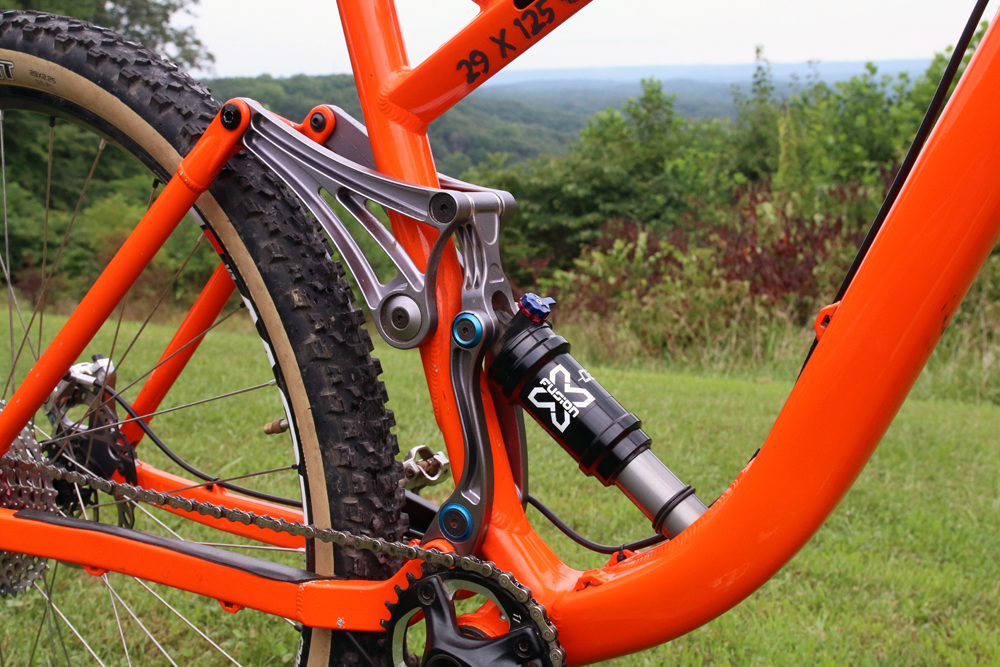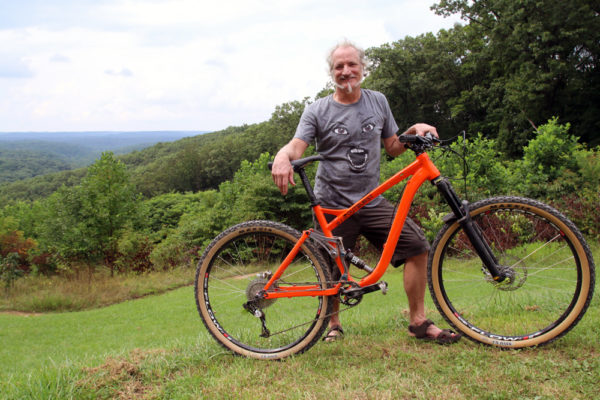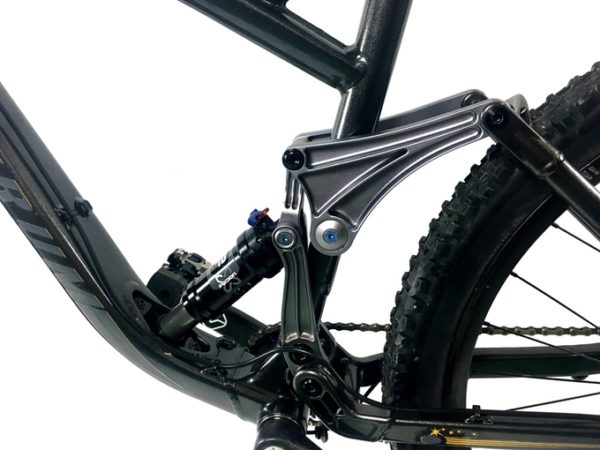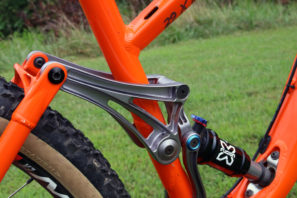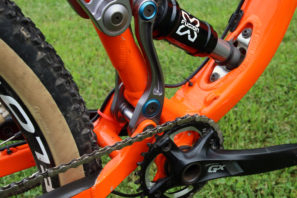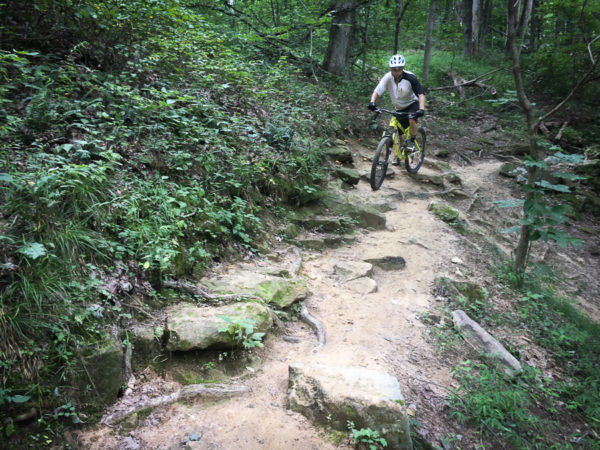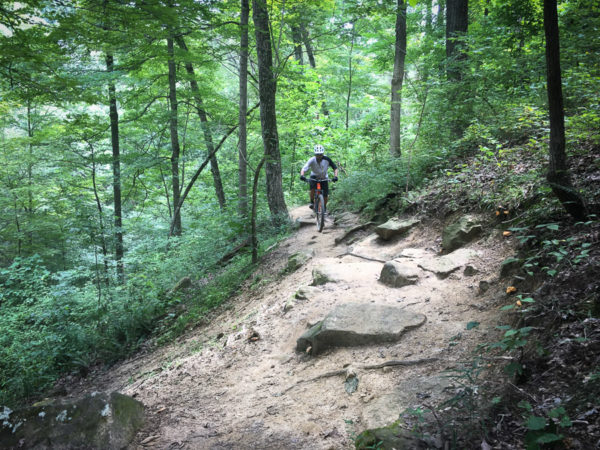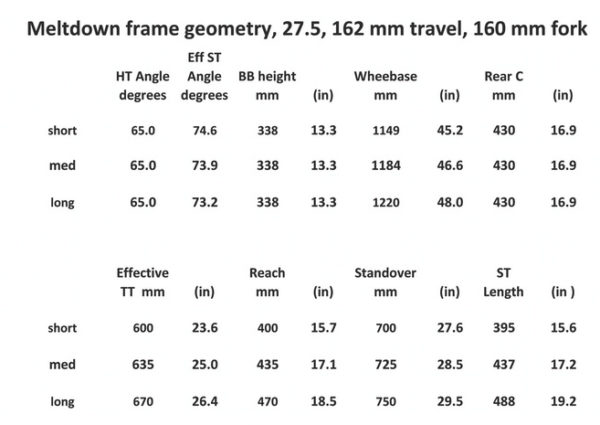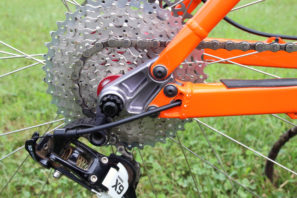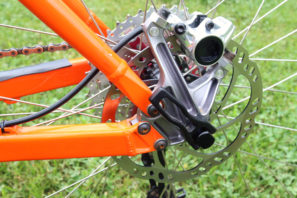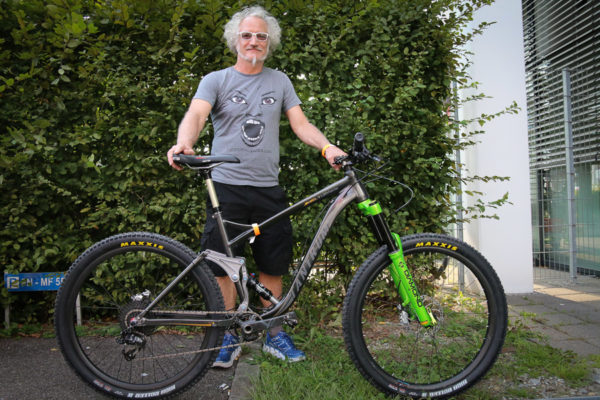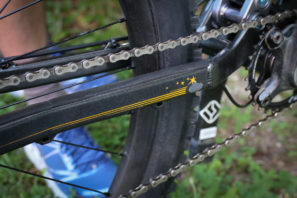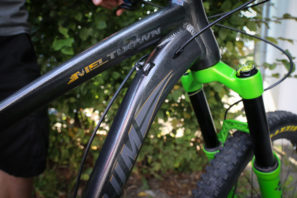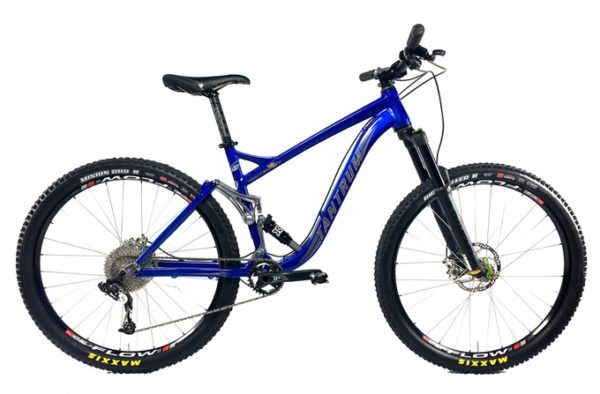You may not know Brian Berthold’s name, but there’s a pretty good chance you’re familiar with some of his work. His most recent and well known design in the bike industry would have to be the Magic Link which was licensed to Kona, but his expertise goes back, way back. Before he ever got mixed up with bikes, Brian started on his path to suspension enlightenment through a motocross career which involved shock testing. That led him down the path of motorsports suspension and car design which included everything from rally, to Indy Car, and even a brief stint with F1.
Eventually, mountain bikes entered the picture with the formulation of Therapy Components and his first prototype air shock for Cannondale bikes in 1993. Production rear shocks for K2/Proflex paved the way to one of the first 7″ dual crown inverted suspension forks, and eventually into the world of floating brake calipers for World Cup DH racing for the likes of Trek and Kona, and ultimately back to Kona with the Magic Link suspension design. This is the abridged version, but rest assured, the guy’s got some history.
Why the long winded set up? That’s because Brian is back with his own company now with what he says is an even better suspension design…
For those unfamiliar with the Kona Magic Link bikes, essentially they used two shocks to create a system with variable travel and variable kinematics. In addition to the main shock like that on other bikes, there was a second smaller shock at the bottom which allowed the geometry, suspension rates, even travel numbers to change based on the bike’s positioning.
Now, Brian says he has come up with an equally great suspension system – though without the additional weight and complexity of a second shock. Called the Missing Link, it relies on a linkage from the rear pivot behind the bottom bracket to the upper shock mount. The positioning of this link causes horizontal forces form pedaling or bumps to increase or reduce compression forces on the shock. I’ll stop trying to explain it here because Brian does a great job of breaking it down above.
You’d think with that much input on the suspension from the pedaling forces that the suspension would be completely stiff while climbing, but that’s one of the things that was so impressive about the bike. Thanks to the input from the rocker link above and the “buckling knee” tendency, the suspension remains surprisingly supple while climbing yet offers a supremely efficient climb.
Recently, I had a chance to ride both the 160mm travel Tantrum Meltdown 27.5″ and the 125mm travel Tantrum Outburst 29er at Brown County State Park, and I came away thoroughly impressed with both frames. The Missing Link suspension is sort of an enigma. It seems to have excellent small bump absorption, yet pedals and climbs way better than the travel should allow. Then point it down hill and it’s like it’s a completely different bike – in the best possible way. BCSP certainly has some technical sections and steady downhills, but I would never choose a 160mm travel bike for those trails, but with the Meltdown it was completely reasonable.
In fact, I’d go as far as saying the Meltdown may be one of the best climbing 160mm travel enduro bikes I’ve ridden. Brian attributes this to the fact that the geometry actually steepens by 3 degrees at the head tube and seat tube taking it from 66/73 to 69/76º all without any switches or fancy shocks.
It’s sort of mind boggling because the design carries with it all the suspension cliches that have become so commonly thrown around, only this actually works. Brian actually commented during our ride that he got frustrated that he built all these trick shocks that didn’t sell, so he decided that he would design a trick suspension that could use any shock on the market regardless of how simple it was.
While the basic design of the bike will remain unchanged for production, the geometry will see a few tweaks from the prototypes that I was able to ride. All of these should be welcome changes including shorter chainstays at 429mm (434mm for Outburst 29). The head tube angle also goes to 65 degrees for the Meltdown which sounds crazy slack for a bike like this, but you have to remember that the head tube angle steepens when climbing. The bike I was on at Brown County had an even slacker effective head tube angle since it was running an angle set, and I couldn’t believe how well it pedaled around tight sections of trail going up.
Thanks to the modular dropout system, Brian is able to offer a number of configurations with fewer overall parts. That includes the Meltdown (27.5″ wheels, 160mm travel front and rear), Meltdown Race (Slacker, 180mm travel fork/160mm rear, 27.5″ wheels), Outburst (140mm fork/125mm rear, 29″ wheels), Outburst Race (150mm fork/125mm rear, 29″ wheels), Outburst XC (steeper geo, 29″ wheels, 125mm travel front and rear), and the wild Downburst with a 150mm travel fork and 29″ wheel up front and the 160mm travel rear with a 27.5″ wheel. This is supposedly all from the same frame just with different dropouts, rocker arms, shock, and shock mount.
Keeping with the times, the frames will feature Boost Spacing, but since the dropouts are replaceable, there are also 142mm dropouts available. Other details include a threaded 73mm bottom bracket, 31.6mm internal dropper compatible, room for a large water bottle in the frame, internal shift cable routing and external brake cable routing, and it’s even 2x drivetrain compatible. The aluminum frame isn’t the lightest at 7lb 9oz for a medium with an X Fusion rear shock, but after riding it I’d be willing to deal with the weight for the suspension’s performance. Hopefully this thing gets made in carbon one day, because that would be an awesome bike.
We’d love to spend more time on the bike to really get to know it, but for that to happen the first production run will have to be funded through Kickstarter. Brian has worked with other companies in the past, but this time he’s going it alone and hoping to have the bike produced himself, which is a pretty huge undertaking. Hence the Kickstarter. We caught up with him at Eurobike to see one of the newly painted prototypes which picked up its new look from Tantrum’s recent design competition. I’m digging the look – it’s different from a lot of the paint we see and is pretty subtle, though it has some interesting details.
Along with the Illusion Black, the frame will also be offered in Blueberry above. What may be most amazing about this bike is that over at Tantrum, it’s basically a one man show. Brian has done the design and development getting help where needed to build prototypes, but this project has evolved out of his home base in Indiana. Up for grabs on Kickstarter as we speak, the first 5 frames will sell for just $1200 which includes an X-Fusion O2 Pro RCX rear shock, though DVO Topaz rear shocks can be upgraded to for another $175. Complete bikes will also be offered, starting with their LowDough build kit at $2,600. If you get in on one of the earliest rewards, frames may be delivered as early as April 2017, just in time for next season!
